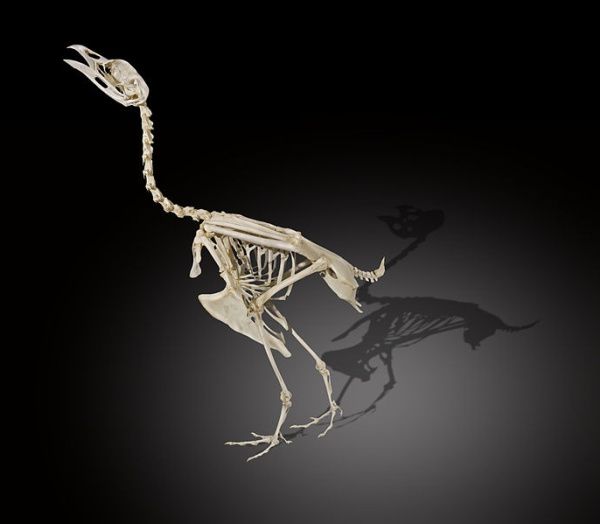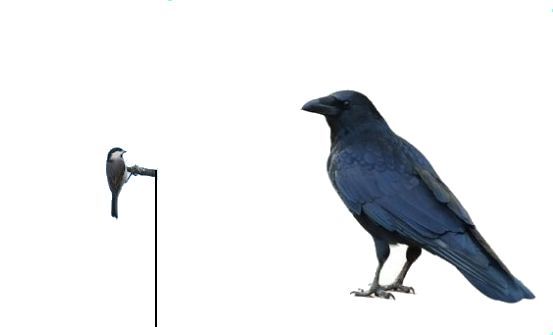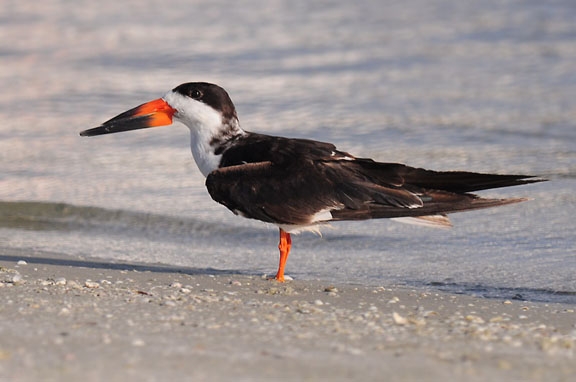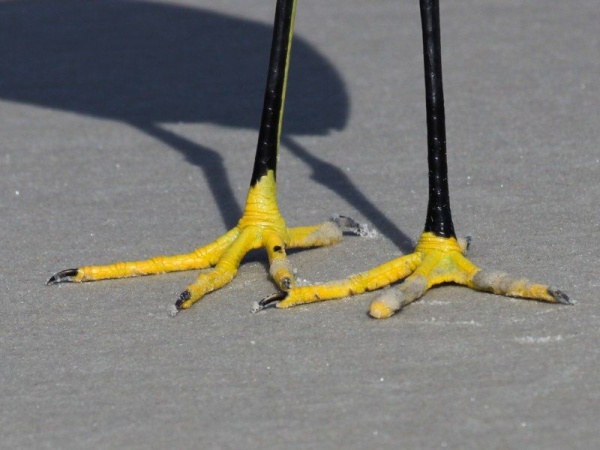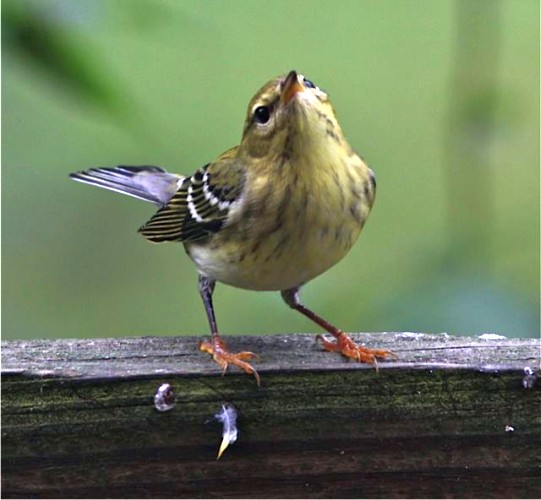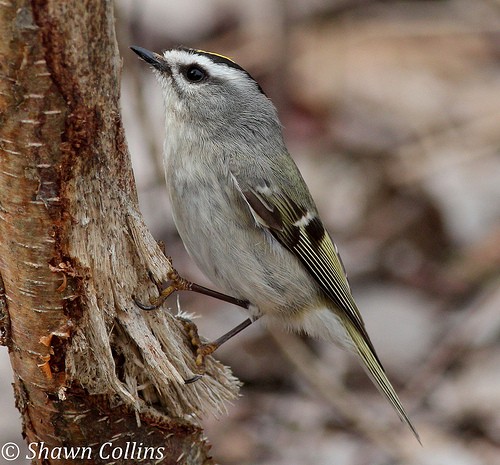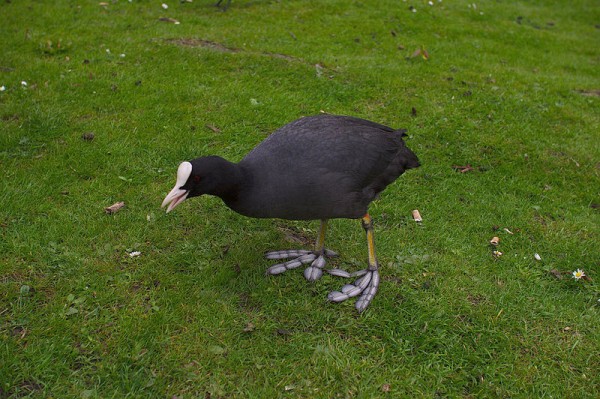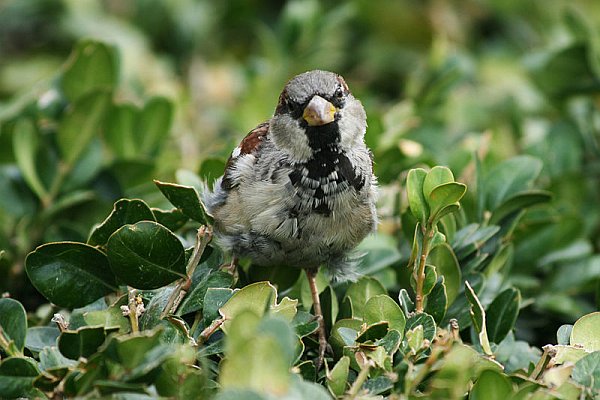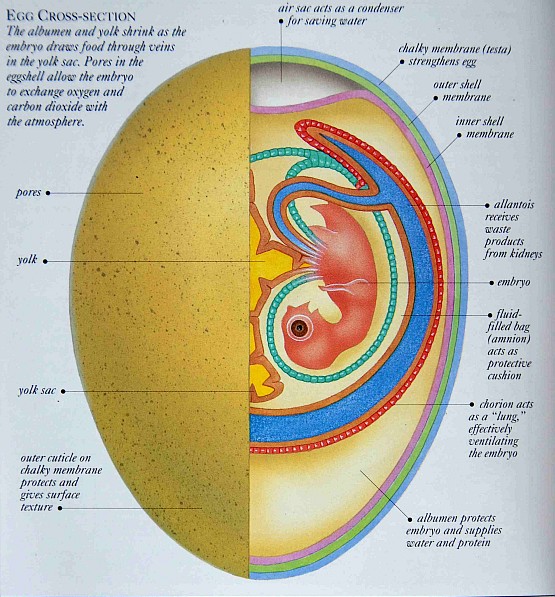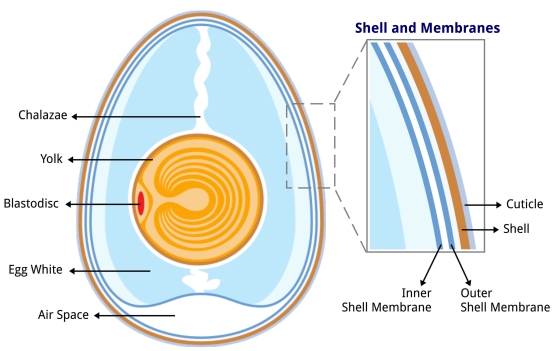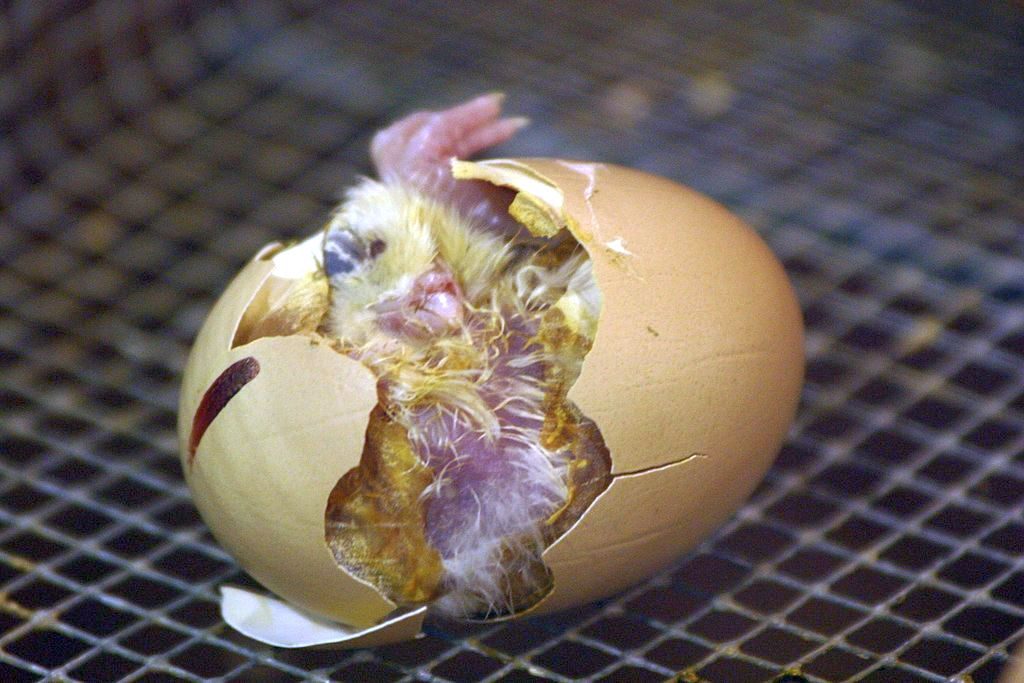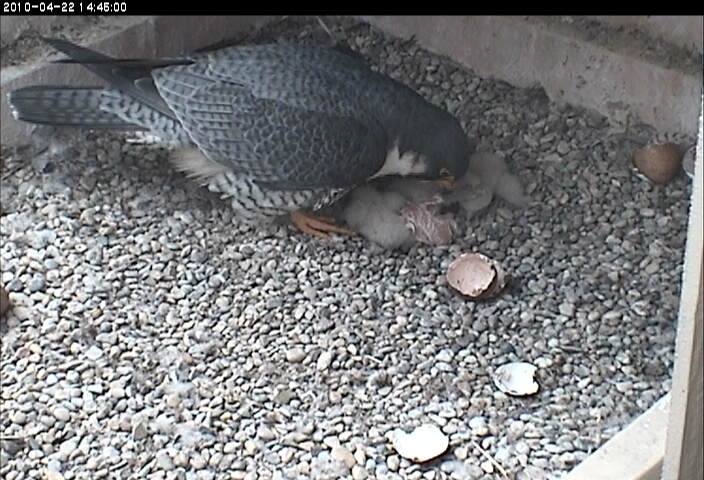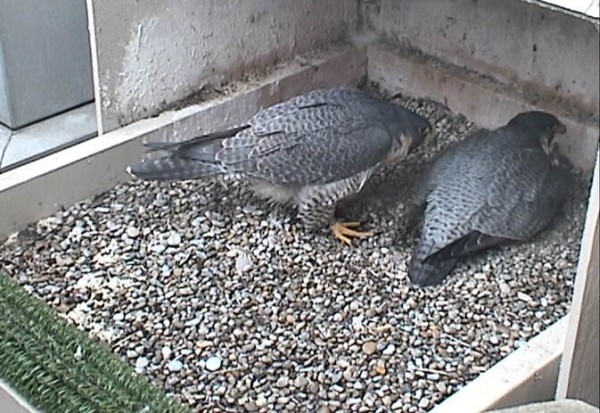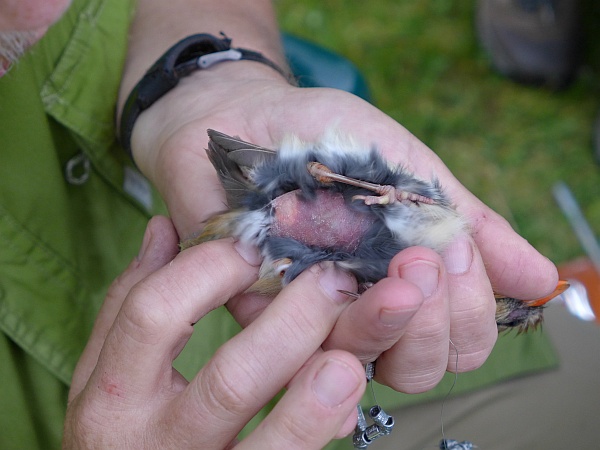
We learned a lot about bird anatomy, at the Neighborhood Nestwatch banding on Saturday. Did you know that …
- When you blow on the belly feathers of a songbird during the breeding season you see bare skin underneath. This is the brood patch for incubating eggs and keeping nestlings warm.
- Songbirds have translucent skin. The red color is muscle under the skin, yellow is stored fat.
- You can see the egg under the skin of a “pregnant” bird!
Even before he checked her belly, Bob Mulvihill could tell this female northern cardinal was gravid when he held her. When he blew on her belly feathers we saw the white oval of the egg near her tail, circled below.
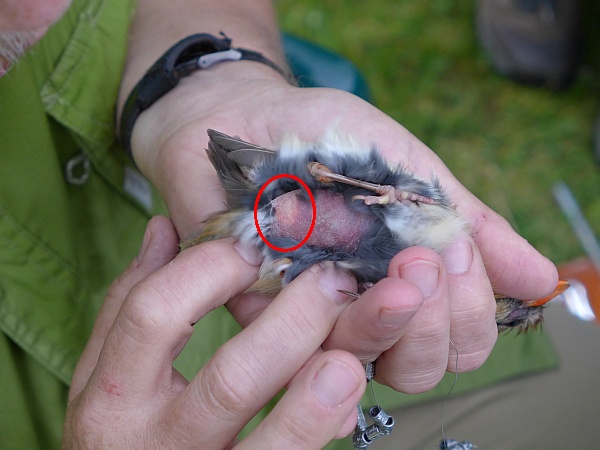
This lady must have come out for breakfast before laying her egg and was delayed by the mist nets near the feeders. She needed to get back to her nest soon(!) so Bob quickly banded, weighed and released her. She immediately flew to the big maple and disappeared.
She weighed about 47 grams — 5+ grams heavier than normal because she was carrying the egg. That’s a significant load to carry.
I hope she deposited it safely and that her morning turned out better than it began. 😮
(photos by Kate St. John)
